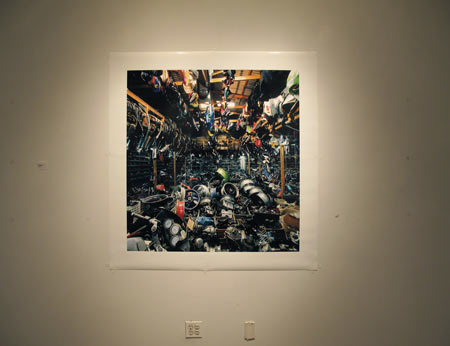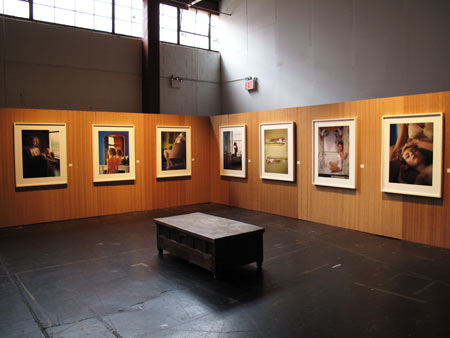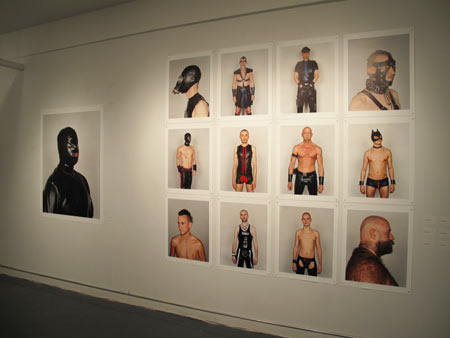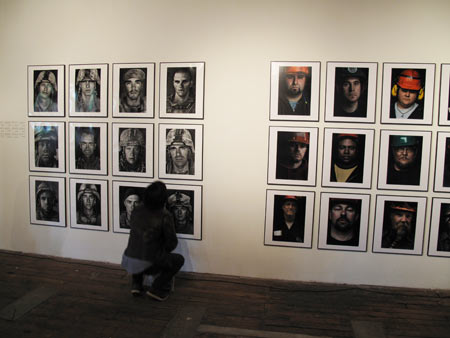Quo vadis, New York Photo Festival?
In many ways, there are quite a few parallels between what curators and art critics do, especially since ultimately, their success depends very strongly on to what extent they manage to apply their personal vision to what they do: The real meat of both professions is where we encounter the person’s mind at work, regardless of whether we actually agree with what the present us or not (even though our contemporary culture is increasingly moving towards the kind of infantile state where we see everything we do not agree with as “bad”). A good critic can write a very scathing review of a show we love - and yet, we would be admiring the criticism. In the same way, a good curator could present us with a show that we would never even have considered, and we would still walk away satisfied.
After all, why go to an art show if what we see is what we know?
I have dabbled in both, curating and being a critic (the latter here). Maybe you will disagree with my description of the curator and the critic. But this is the position I am coming from; and it is this position I had and still have in mind, both when putting together a show and when writing a review.
That said…
New York City deserves to be called one of the major centers of photography in the world, if not the center; and I have always felt that it should have a photography festival reflecting this art form’s richness in this particular place. That is some hurdle to clear!
This year’s New York Photo Festival was the second of its kind, after a maybe slightly messy, certainly not perfect, but clearly extremely promising start last year.
From what I gathered before coming to New York, expectation certainly were higher than last year. From what I gathered while being in New York, there was a clear and across-the-board sense of disappointment.
Just like last year, the festival was centered on four shows, curated by (in alphabetical order) Chris Boot, publisher and editor of photography books, William A. Ewing, director of the Musee de l’Elysee, Lausanne, Jon Levy, director of Foto8, a photography publishing company, and Jody Quon, photography director at New York magazine. Four personalities, four visions of photography, four shows.

Last year, they called it “curating 2.0”. This year, William Ewing wrote about his show that he “wanted to celebrate photography’s unruly nature, its messy diversity; it’s stubborn refusal to fit into ‘neat’ curatorial boxes”. It was called “All over the place!”, and quite literally it was. I might have missed part of the show, since it was displayed in three buildings (or four?), with one building containing two (or three?) rooms.
In a way, there is no possibility to criticize this show: If you think it was not very good then that really only shows that your thinking is stuck in that “curatorial box”. A neat pre-emptive curatorial strike! But it looks like that a neat curatorial box might in fact be quite preferable over a show that is “all over the place” - a hodge-podge of photography with no obvious or apparent relation to each other. In this day and age you don’t have to come to New York and see a show to learn that photography is very diverse. You would have to be living under a rock if that was news to you.
Ewing rightly notes that “so much fine work slips through our fingers” - and that’s exactly what a curator is needed for: Someone who will gather work that might have slipped through many fingers, and she or he will present her or his view of interconnections, of a theme, of an idea… That is what you go to a curated show for. It’s about more than just the individual pieces of work in the show, it’s about somebody’s vision to bring all that work together and to have new, additional meaning arise from it. As a curator, you have to hang the bar high, step back… and then hang it even higher.
There was no such vision in Ewing’s show, there was no additional meaning (apart from the trivial fact of diversity). The show did contain some very nice photography, but it was too mixed a bag to really work. You’d go to some venue, look at some work, then at some other venue, to look at some other work - almost like an unplanned stroll in Chelsea (except that in Chelsea, photography is not just tacked to the walls. A photographer I talked to noted that Ernst Haas must surely be turning in his grave given that his beautiful colour photographs were presented as shockingly bad inkjet prints, in a bulging matte).
As I wrote earlier, this in New York City, where you have a ton of world-class Chelsea galleries, the Met, MoMA, the Guggenheim Museum, and where people are used to seeing the best…

I overheard someone say that Jody Quon’s show “I don’t really know what kind of girl I am” should have been called “I don’t really know what kind of show this is”; and while that is a bit harsh, it seems to point into the right direction. When I read Quon’s statement, I thought that it contained some nice ideas for a show, but that the curator had stopped short of condensing things into something more coherent. Seeing the images I missed that final step where narrowing the selection down would have given it a clearer focus. The movie “Juno” (which Quon mentions in her essay) was not filmed using an early draft of its script. “I don’t really know what kind of girl I am” dissipated a lot of the energy contained in some (mind you, not all) of the work.

In contrast, Chris Boot’s show “Gay Men Play” (which was tucked away a few blocks from where the other shows were happening) had that very clear focus. The idea of the show was not necessarily mind-blowing; but “Gay Men Play” was a clear and fine example of how to curate (and present!) a show with first-class photography and how to celebrate the medium’s diversity. There even was a little installation!

Lastly, there was Jon Levy’s “Home for good”, which had me react to it in the same way I reacted to Jody Quon’s show: A second or third draft for a show taken as the final thing. As before, I missed seeing more of a focus, more of a - maybe even somewhat unexpected - guiding of the viewer towards something.
Just as an aside, Levy’s “Home for good” also had me realize how we seem to have arrived at a point where almost the entire photographic debate of the various wars we are engaged in is focused on what people now call “the troops”. It’s almost like what the troops do when they go overseas is not really interesting; it’s almost like they are dealing with unknown people or entities, because so much of what we see is how it is tough to go someplace else and fight one of those wars. Of course, it is tough, but what we, as a society, also need to get context, so we can decide whether we’re really happy with the wars fought in our name. Otherwise, we’re in trouble.
Coming back to the Festival, I will admit that I was very disappointed. I suppose I will treat it like the second album of a promising band, the album that didn’t follow up on the first album, which had so much promise, so many great tunes (besides the few duds). Of course, that then has me waiting for next year, where we will really see whether it’s going to be a New York Photo Festival or a photo festival that just happens to be shown in New York.